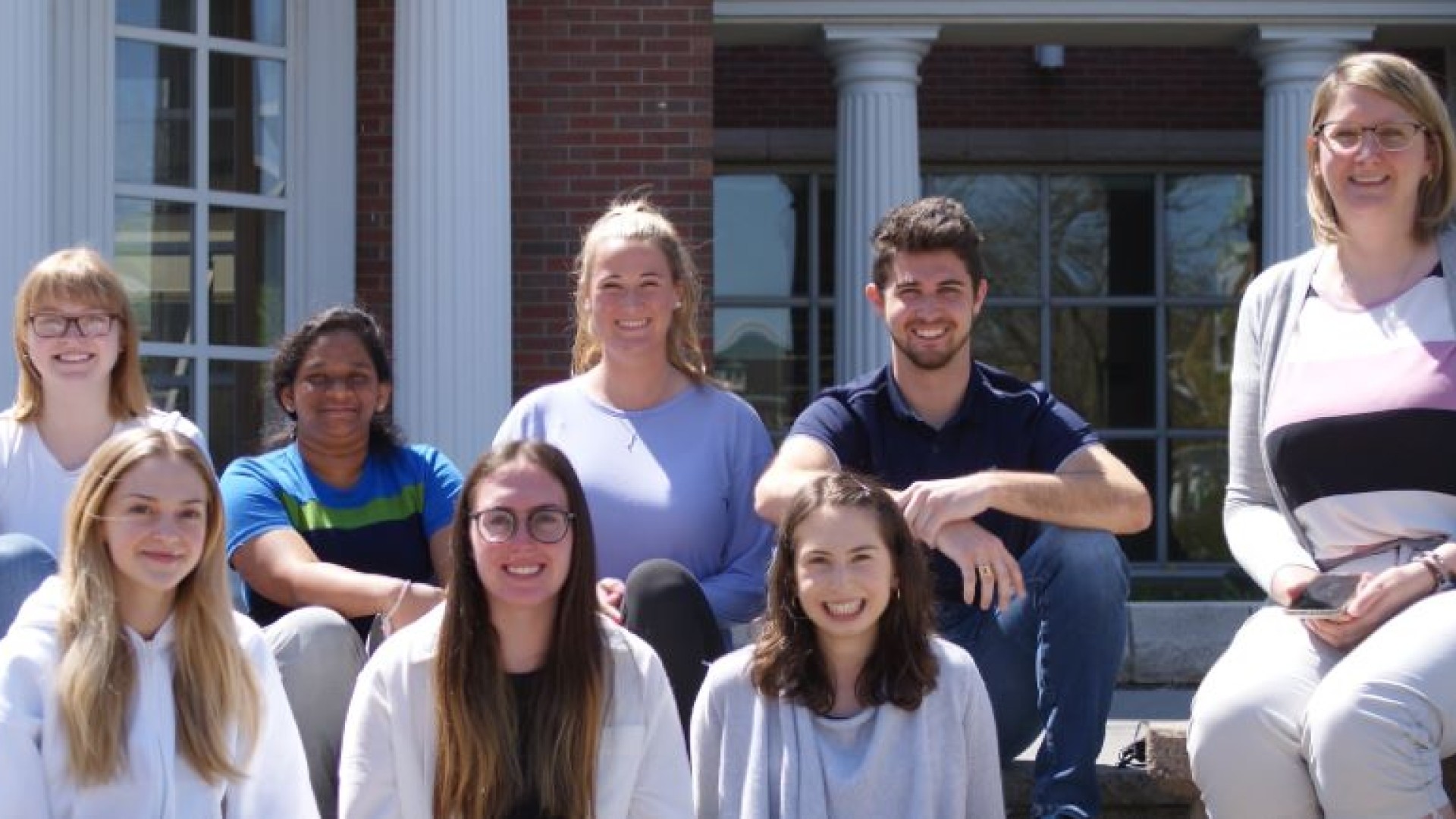
Is your drinking water safe?
That’s the question a research collaboration between a group of St. Francis Xavier University chemistry faculty and students, international colleagues, and C.E.C. Analytics, a small Calgary-based biotechnology company, is seeking to answer as they work together to develop a rapid test that the everyday individual can use to detect bacteria contamination in drinking water.
Dr. Geniece Hallett-Tapley, an associate professor of chemistry at StFX, along with Dr. Jazmín Silvero from University of Córdoba (Argentina) made news earlier this year when they developed a test to rapidly detect bacteria contamination by using gold nanoparticles, antibiotics and lights.
After several media articles appeared on this research, Dr. Paul Westlund, CEO of C.E.C. Analytics, a company that focuses on methods to sample and detect harmful drinking water contaminants, recognized the potential and impactful benefits of incorporating the nanoparticle research into the C.E.C. sampler for rapid on-site field detection of harmful bacteria and other pathogens in community potable water supplies.
The company, which has developed a compact composite sampler to be used in a variety of environments to monitor wastewater for viruses, bacteria, and emerging compounds, approached StFX about a partnership.
“The great thing about our partnering with St. Francis Xavier University is that we can tap into Dr. Hallett-Tapley’s precise knowledge of how to use metal nanoparticles to tag and identify harmful bacteria in water, and with her team of student assistant researchers, we will explore together ways to adapt this chemical process for use in the field in our water sampling technology,” Dr. Westlund says.
“Ideally, we’d like to be able to rapidly identify many harmful water contaminants on-site, which the results can be used as a decision-support tool for public health measures. This initiative is possible through a multidisciplinary industry and academia team that share a collective goal of finding cost-effective solutions that focus on protecting water supplies across Canada, particularly in remote communities.”
C.E.C. and the research team have now been working together since March to design a prototype that may provide rapid in-field water quality testing analysis. They’re focusing on producing a strip-like version of the rapid tests.
StFX is currently sending the prototype to Argentina for some control experiments while Dr. Hallett-Tapley’s lab is preparing to test authentic water samples sent to them by C.E.C. The samples are taken from communities presumed to have contaminated water.
“We are excited to examine the potential of our technology in authentic, real-world, samples,” says Dr. Hallett-Tapley. “The preliminary data is promising and indicate that upcoming water testing trials should prove successful.”
Dr. Hallett-Tapley says their research project started in 2019 when she and Dr. Silvero, who was visiting StFX as a James Chair Research professor, began talking about the many issues with drinking water both in Argentina, and in Canada in underdeveloped communities. The two wanted to design something that could offer individuals, in both countries, a rapid manner to test drinking water quality both in the field or within the home.
Dr. Hallett-Tapley says one of the great things about this partnership is that it’s allowing StFX students, including third year honours chemistry student Jill Fougere, who has spent the summer involved in this research, the experience of collaborating with an industrial partner while also gaining academic experience.
“It’s allowing our students to have a versatile learning experience,” she says
“It broadens their views of scientific research by providing hands-on experience of chemistry applications. Students get to see, firsthand, how the research we are doing on the bench at StFX can be transferable into the general community.”
She says it’s also been great as a researcher to see how the initial concept has progressed from a simple discussion over coffee with a longtime collaborator and friend to “a promising technology with meaningful and positive societal impacts.”
This research is, in part, made possible by the Government of Canada Research Support Fund.

